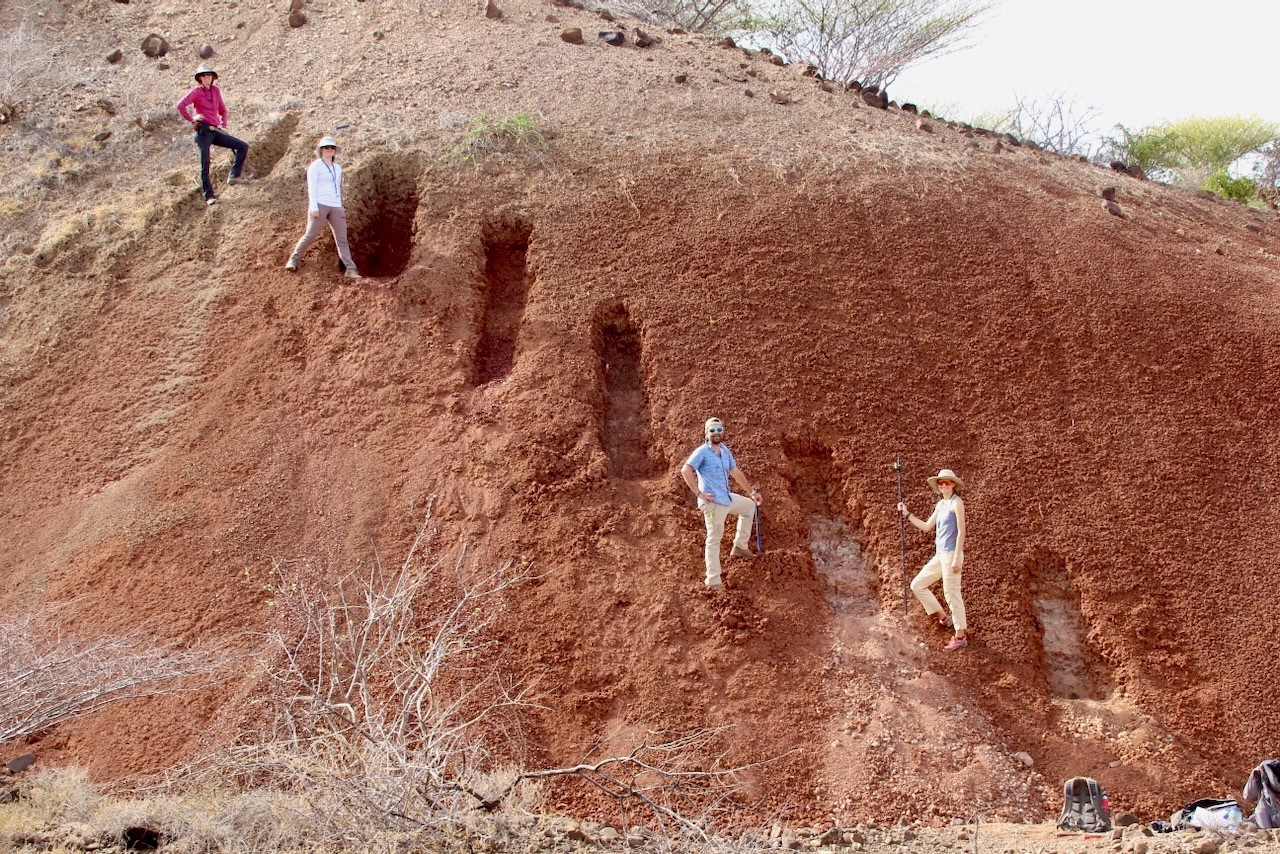Two Studies Push Upright Ape Origins in Africa Back by 10 Million Years
Analyses of plant remains and other evidence show that the landscapes our ape ancestors evolved in existed much earlier than previously thought.
Some anthropologists think that our ape ancestors evolved an upright torso in order to pick fruit in forests, but new research suggests a life in open woodlands and a diet that included leaves instead drove this adaptation. The finding pushes back the origin of upright apes and that of grassy woodlands from between 7 million and 10 million years ago to 21 million years ago.
Fruit generally grows on trees’ outer branches, and to reach it, large apes must distribute their weight on these branches, then reach out with their hands toward their prize. This is much easier if an ape is upright. If its back is horizontal, its hands and feet are generally underneath the body, making it much harder to move within picking range. This is how modern apes reach fruit, and, among other theories, it’s been theorized that is why apes evolved to be upright.
But the new research, centered around a 21-million-year-old fossil ape called Morotopithecus, suggests this might not be the case. Instead, researchers think early apes ate leaves and lived in a seasonal woodland with a broken canopy and open, grassy areas. The researchers suggest this landscape, instead of fruit in closed canopy forests, drove apes’ upright stature.
The results are contained in two papers just published in the journal Science.

One study focuses on a 21-million-year-old site in eastern Uganda. There, a group led by University of Michigan researchers along with scientists from Columbia Climate School’s Lamont-Doherty Earth Observatory and other institutions examined fossils found in a single stratigraphic layer, including fossils of Morotopithecus, the oldest clearly documented ape species. Also within this layer were fossils of other mammals, ancient soils called paleosols, and tiny silica particles from plants called phytoliths. The researchers used these lines of evidence to recreate the environment of Morotopithecus.
They discovered that the plants living in this landscape lived through alternating seasonal periods of rain and aridity. This also means that at least part of the year, apes had to rely on something other than fruit to survive. Together, these findings indicate that Morotopithecus lived in an open woodland punctuated by broken canopy forests composed of trees and shrubs.
“These open environments have been invoked to explain human origins, and it was thought that you started to get these more open, seasonal environments between 10 and 7 million years ago,” said lead author Laura MacLatchy of the University of Michigan. It was thought that our ancestors stared striding around on two legs because the trees were further apart. “Now that we’ve shown that such environments were present at least 10 million years before bipedalism evolved, we need to really rethink human origins, too,” said MacLatchy.
The first clue that these ancient apes were eating leaves was in the apes’ molars, which had numerous peaks and valleys. Molars like this are used for tearing fibrous leaves apart, while molars used for eating fruit are typically more rounded.
The researchers also examined the apes’ dental enamel, as well as the dental enamel of other mammals found in the same layer. They found that isotopic ratios—the abundance of two isotopes of the same element—in their dental enamel showed that the apes and other mammals had been eating so-called C3 plants, which are more common in open woodland or grassy woodland environments today. C3 plants are primarily woody shrubs and trees adapted to arid conditions, while so-called C4 plants are arid-adapted grasses.
Previously, researchers believed equatorial Africa around 20 million years ago was thickly carpeted with forest, and that open seasonal woodlands and grasslands evolved only later. But the second paper, led by scientists at Baylor University, used a set of environmental proxies to reconstruct the vegetation structure from nine fossil ape sites across Africa, including the eastern Uganda site. These proxies revealed that C4 grasses were everywhere during the earlier time period. That suggests that these landscapes were all open, not forested.
“The isotope data from the ancient plant waxes and phytoliths collected from the Morotopithecus site provide strong evidence for C4 grasses on the landscape at the local scale,” said Kevin Uno, a paleoclimatologist at Lamont-Doherty and coauthor of both papers. “Other regional plant wax records from marine cores indicate little to no C4 grass in eastern African at this time. So these new data are exciting because we now have a new puzzle to figure out: Why do we see different signals at the local versus regional scale?”
To reconstruct the ancient environment at each location, the researchers used carbon isotope analyses of ancient soil organic matter, plant wax biomarkers and phytoliths found at each site. The carbon isotope analyses revealed that a wide range of plants lived in the grasslands, ranging from those that comprise closed canopy to wooded grasslands.
Uno’s group at Lamont analyzed the wax biomarkers—substances left over from the waxy material that protects leaves. These indicated a large variety of shrubs and trees as well as grasses. Phytoliths—microscopic biosilica bodies that give plants their structure as well as a defense against being eaten—provided further evidence for abundant C4 grasses, pushing back the oldest evidence of C4 grass-dominated habitats in Africa, and globally, by more than 10 million years.
“The findings have transformed what we thought we knew about early apes, and the origin for where, when and why they navigate through the trees and on the ground in multiple different ways,” said Robin Bernstein, program director for biological anthropology at the National Science Foundation, which sponsored the research.
Adapted from a press release by the University of Michigan.
